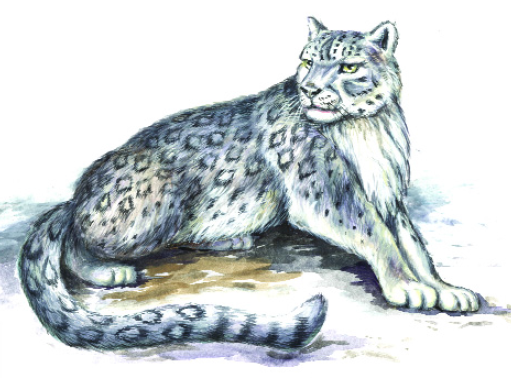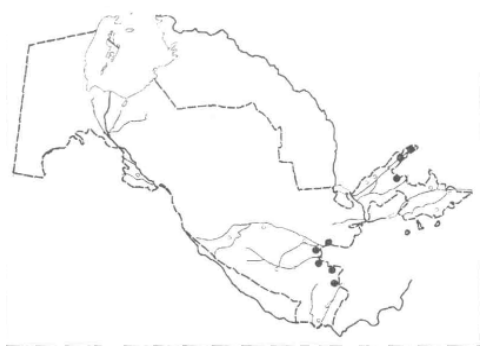Snow Leopard (Irbis)
Ilvirs
Snow leopard
Uncia uncia (Schreber, 1775)


Status. 1 (CR.). Locally widespread western subspecies of the Central Asian species, which is on the verge of complete extinction. Included in the IUCN Red List [EN4].
Spread. Western Tien Shan, Western Pamir-Alai. Outside of Uzbekistan: Tajikistan, Kyrgyzstan, Kazakhstan, the south of Western Siberia, Mongolia, China (Xinjiang), Afghanistan, Pakistan. In the south-west of China, in India, Nepal, Bhutan – another subspecies.
Habitats: Middle and upper belt of mountains at altitudes of 2500-4500 m asl Prefers watersheds, rocky and talus slopes.
Number. It has always been small. In recent decades, the number has been steadily declining. In the 1980-1990s. in the Gissar reserve, there were 5-11 individuals, in the 1970-1980s. in Chatkal reserve – 1-3 individuals; at present, probably, up to 20-30 individuals.
Lifestyle. It is active in twilight, in the afternoon it hides in caves, crevices of rocks. The frequency of childbirth is 2 years. Mating – in February-March, the birth of cubs (1-5) – in June; young people stay with their mother for 1-1.5 years, become sexually mature at 2-3 years of life. It feeds on wild ungulates, less often rodents. Makes seasonal vertical migrations following wild ungulates. Life expectancy is up to 21 years.
Limiting factors. Economic development of high mountain pastures, reduction of food supply, poaching. Breeding. Propagated in the zoos of the world.
Security measures. Mining is prohibited. It is protected in the Gissar, Zaamin, Chatkal reserves and Ugam-Chatkal National Park. Listed in Appendix I CITES.
Sources. The Red Book of the Republic of Uzbekistan 2009.